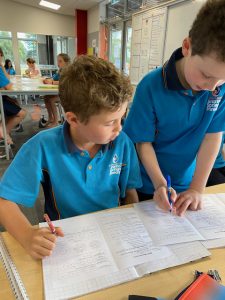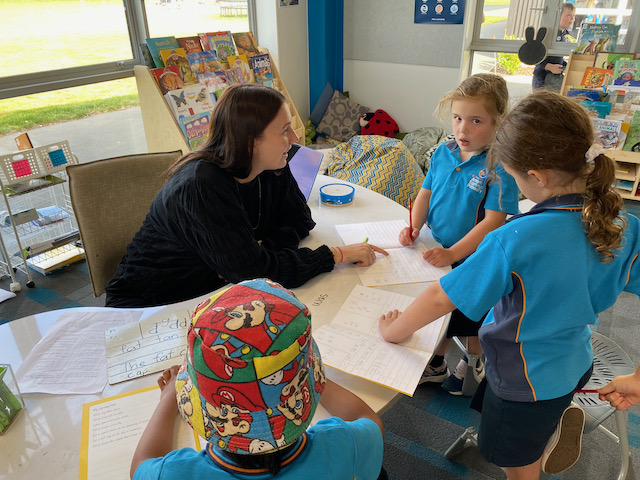As part of the 100-day plan, the new National Government announced the change to mandate an hour of reading, writing and maths every day. In reality, this is not very different from what your child is already experiencing at Ararira.
The teaching of reading, writing and maths is an average of one hour a day. It also includes reading, writing and mathematics learning in all contexts and other related activities so is much more than ‘instruction’. These core subjects are foundation skills and are woven through other curriculum areas.
As you are aware, we follow a structured literacy approach to teaching reading at Ararira. More information about this approach can be found here. Once the ability to decode and read independently is achieved, children move to reading and responding to texts as part of their reading time. In addition, rich literary texts are shared and discussed with the children using picture books, novels and poems. Language and vocabulary are discussed and learned.
Writing is much more than the writing of stories, recounts and instructions. The time allocated here is used to teach spelling and handwriting. Both skills have to become automatic to free cognitive space for children to craft and write for different purposes. Spelling develops in complexity from looking at rhyme and medial sounds to morphology. Children are also taught about the parts of language and sentence composition.
Maths and statistics include teaching not only number operations but also geometry, algebra and measurement. A strong focus of mathematical teaching is the ability to solve problems and talk about their mathematical thinking. Maths and English are just two of the learning areas of the New Zealand Curriculum. In total, there are seven learning areas for primary. These are:
- English
- Mathematics and statistics
- The arts
- Health and physical education
- Science
- Social sciences (including Aotearoa New Zealand Histories)
- Technology.

In Years 7 and 8, children are also required to learn languages and we have focussed on te reo Māori and Mandarin. Te reo me te tikanga Māori is to be woven through all curriculum areas. By taking 3 hours a day to focus on two curriculum areas we are worried about the depth and coverage that can be applied to other curriculum areas and will necessitate the need to integrate areas.
We are monitoring the teaching of all curriculum areas and all hapori | teams share their planning and a timetable for a usual week with the leadership team.
Link to MoE support material for whānau
Skills of utmost importance to children’s growth and development are the key competencies. These are taught through all curriculum areas and are the basis of all learning. The key competencies are:
- Thinking
- Relating to others
- Using symbols and texts
- Managing self
- Participating and contributing.
In addition to this change, the government is implementing significant changes as the NZ curriculum is being rewritten. New programmes, called the common practice model CPM will be released later in the year and are to be implemented from 2025. All other learning areas are being ‘refreshed’ over the next few years. Curriculum levels are being replaced with phases of learning, progressions and progress outcomes.

All learning areas will be taught using the know, understand and do learning model.

Our team of teachers at Ararira are amazing practitioners well-equipped to manage the changes in the education arena. It is challenging to face steady change and our teachers are doing an incredible job.

Thanks for this overview Claire,. Interesting reading and a great summary.